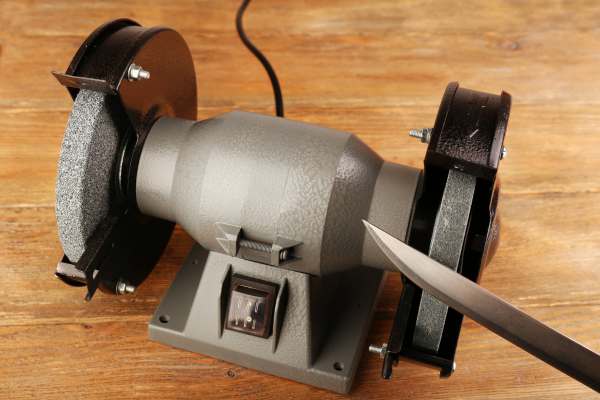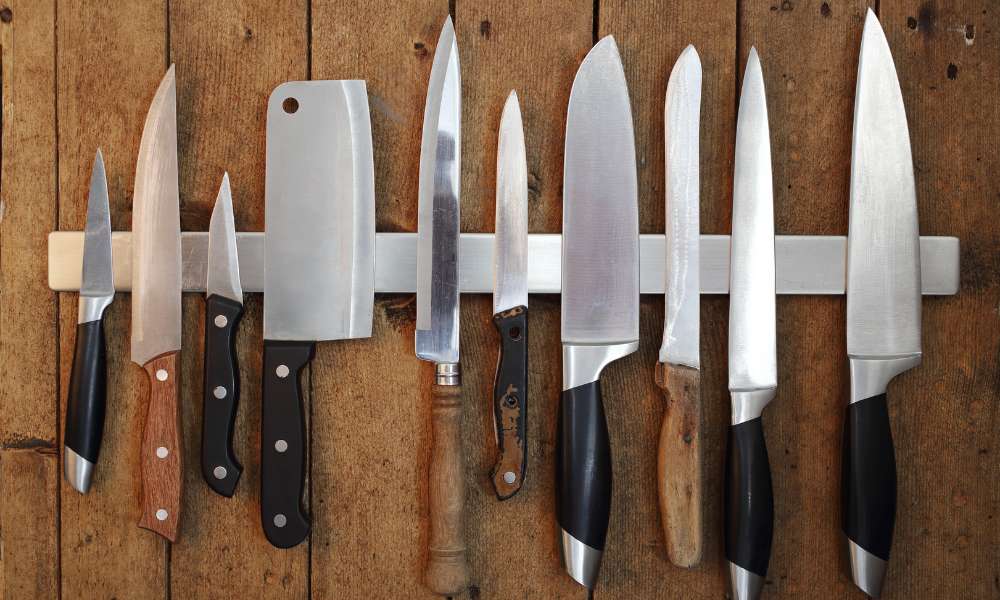Maintaining the edge and performance of your kitchen knives, understanding the optimal angle for sharpen is crucial. The precise angle at which you sharpen your knives can significantly affect their cutting efficiency and longevity. Each knife design and purpose might require a slightly different sharpening angle, generally ranging between 15 to 20 degrees on each side for most knives. Mastering the art of sharpening at the right angle ensures that your blades remain razor-sharp and durable, ready to tackle any culinary challenge with ease. This guide aims to demystify the process, providing you with the knowledge needed to keep your kitchen knives in top condition.
What Are Knife Angles?
Knife angles refer to the angle formed between the blade’s edge and a line perpendicular to the blade’s face, crucial in determining the sharpness and durability of the knife. This angle plays a pivotal role in how the knife performs various tasks. A more acute angle can make the knife razor-sharp for precise cuts, while a larger angle might offer more durability for heavier tasks. Understanding these angles is essential for anyone looking to maintain their kitchen knives effectively, as it influences both the ease of cutting and the longevity of the blade.
Importance Of Proper Knife Sharpening
Proper knife sharpening cannot be overstated in its importance. A well-sharpened knife not only makes food preparation safer by requiring less force to cut through ingredients, thus reducing the risk of accidents, but it also enhances the pleasure of cooking by making cutting, chopping, and slicing tasks more efficient and enjoyable. Moreover, regular and proper sharpening extends the life of your knives, protecting your investment in quality kitchen tools. It ensures that the blade maintains its optimal edge, performance, and reduces wear over time.
The Ideal Angle For Sharpening Kitchen Knives
The ideal angle for sharpen kitchen knives often varies depending on the knife’s purpose and the material from which it is made. However, a general guideline is to maintain an angle of about 15 to 20 degrees on each side of the blade for most knives. This range strikes a balance between a sharp edge for precise cutting and sufficient durability to withstand the demands of kitchen tasks. Precision in maintaining this angle during sharpening is key to achieving a blade that is both sharp and resilient, ready to handle everything from delicate slicing to robust chopping.
Tools For Sharpening Kitchen Knives
1. Whetstones

Whetstones, also known as sharpening stones, are arguably the most traditional and versatile tools angle for do your sharpen kitchen knives. They require some skill and practice but offer unparalleled control over the sharpening process. Whetstones come in various grit sizes, from course for repairing damaged edges to ultra-fine for polishing and refining the blade’s edge. Using a whetstone involves sliding the knife across the stone at the correct angle, a technique that, once mastered, can produce exceptionally sharp edges tailored to your specific needs.
2. Electric Sharpeners

For those seeking convenience and speed, electric sharpeners are a fantastic choice. These devices often feature multiple sharpening slots with built-in guides to help maintain the correct angle, making them suitable for beginners and those less confident in their manual sharpening skills. Electric sharpeners can quickly restore a dull knife’s edge with minimal effort, although they offer less control over the sharpening process compared to manual methods and may not be suitable for all types of knives.
3. Honing Rods

While not sharpeners in the traditional sense, honing rods are crucial for maintaining a knife’s edge between sharpenings. They are typically made of ceramic or steel and work by realigning the edge of the knife, correcting any minor bends or deviations that occur with regular use. Regular use of a honing rod can significantly extend the time between sharpenings, keeping your knife ready for action. However, it’s important to note that honing rods do not remove metal from the blade and cannot sharpen a dull knife; they are used to maintain sharpness rather than restore it.
Step-By-Step Guide To Sharpening Kitchen Knives
1. Preparing Your Sharpening Tools

Before you start sharpening, it’s crucial to prepare your tools. If you’re using a whetstone, you’ll need to soak it in water for about 5 to 10 minutes (unless you’re using a diamond stone, which does not require soaking). This process ensures that the stone is saturated, preventing it from drying out and potentially damaging your knife during sharpening. Ensure you have a clean, stable workspace and place a damp cloth underneath the stone to prevent it from slipping.
2. Setting The Angle

Finding the right angle is crucial for effectively sharpening your knife. For most kitchen knives, an angle of 15 to 20 degrees on each side of the blade is ideal. To maintain this angle, you can use angle guides that come with some whetstones or visualize the angle by holding the knife at a 90-degree angle to the stone, then halving that angle, and halving it once more. This method is not precise but gives you a rough estimate to work with.
3. The Sharpening Process

Start with the Coarse Grit Side of the Stone: Begin with the coarse grit to shape the edge if your knife is particularly dull or damaged. Place the edge of the knife against the stone at the correct angle, then gently push the blade away from you as if you were trying to slice a thin layer off the top of the stone. Apply consistent pressure, and use your fingers to maintain the angle. Repeat this motion 5 to 10 times, depending on the dullness of the knife.
Switch to the Fine Grit Side: After shaping the edge with the coarse grit, flip the stone to its finer side to refine and polish the blade. Repeat the sharpening motion for an equal number of strokes to ensure an even edge.
Check the Sharpness: Test the sharpness of your knife by slicing through a piece of paper. If it slices cleanly, your knife is sharp. If not, repeat the process with the fine grit side until satisfied.
Clean and Dry Your Knife: After sharpening, it’s important to clean your knife with warm soapy water to remove any metal filings and then dry it thoroughly to prevent rust.
Is It Safe To Sharpen Knives At Home?
Sharpening knives at home is not only safe but also an essential aspect of kitchen maintenance, provided that it is done correctly and with caution. Like any task involving sharp objects, there are risks, but these can be minimized through proper technique, the use of appropriate tools, and adherence to safety guidelines. Ensuring your workspace is stable and well-lit, keeping your hands dry to avoid slipping, and using tools correctly are critical measures to take. Furthermore, learning the right way to hold the knife while sharpen and keeping your fingers away from the blade’s edge can prevent accidents.
Concluding
Sharpen your kitchen knives at home is a practical and essential skill that angle enhances the safety, efficiency, and enjoyment of cooking. By selecting the appropriate tools, such as whetstones, electric sharpeners, and honing rods, and following a careful, step-by-step sharpening process, you can maintain your knives’ sharpness and durability. Understanding the importance of the correct sharpen angle and regularly caring for your knives not only ensures they perform well but also extends their lifespan. While sharpening knives at home requires attention to detail and safety precautions, it is undoubtedly within the reach of home cooks willing to invest a little time and effort. Mastering this skill will make food preparation a smoother, safer, and more enjoyable experience, underlining the value of keeping your kitchen knives in top condition.
